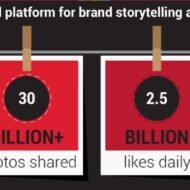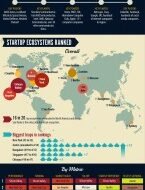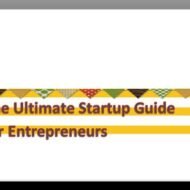Posted by Managementguru in How To, Marketing, Social Media
on Nov 13th, 2015 | Comments Off on Make Instagram Your Brand Ambassador

Make Instagram Your Brand Ambassador Watch this VIDEO to quickly double your Instagram followers by spending just 5 minutes per day. Instagram is the new wave in social media marketing niche and is growing by leaps and bounds. Since it is an online mobile photo-sharing, video-sharing social networking service, user access is easy – is that not an added advantage for your business promotion? More than selling, making your brand reach the right target audience is more important. Instagram is one such mobile SNWS which facilitates easy brand promotion with little effort but huge exposure. A Few Excerpts from the Web on How to Use Instagram Effectively for Your Marketing What if we told you that Instagram is currently the world’s fastest-growing social media network and can boast of having 400 million active users? That’s 100 million more than Twitter. Can you afford to ignore such an opportunity? Since Facebook’s acquisition of the channel in 2012, Instagram growth has exploded, with 400 million active users, 30 billion photos shared, and an average of 70 million photos posted per day. With the adoption of a few best practices, Instagram can become a viable and engaging platform for many businesses to help build their brand and reputation and ultimately sell more. And while some businesses, particularly those with visual appeal (including those in the fashion, food, travel and entertainment industries), will find Instagram an instant fit, there remain a number of opportunities available to organizations in any vertical. Remember: Instagram will only drive success if it is operated as part of a cohesive marketing #strategy (nothing works in a vacuum). To this end, you should use Instagram (and any other social media channel) to keep your prospects and clients engaged with your brand. Social media will not replace the need for a well-designed website, a regularly updated blog and a targeted email marketing strategy (this will drive revenue). Put all four of these items together, and you’ll find, with the addition of hard work and planning, success comes more easily. Curated from Instagram for Business — Picture-Perfect Marketing Instagram Gives Amazing Results Through User Engagement People are engaging with Instagram posts on levels unparalleled by any other social network. According to Forrester research, Instagram user interactions with brands is 400% higher than on Facebook and Twitter, delivering 58 times more engagement per follower than Facebook and 120 times more engagement per follower than Twitter. Curated from 5 Killer Instagram Marketing Strategies You Need to Know | SocialTimes Effective Instagram Marketing Strategies 1. Formulate your creative strategy: Ask yourself what your business has to offer people who are on Instagram. Why should they follow you on Instagram, when they are already following you on Facebook and Twitter? The trick here is to give them exclusive access to things that have more to do with your business location and your community than the actual promotions itself. When you’re using Instagram, think of personal engagement and the genuine interest of your audience as opposed to making your posts all about sales and promotions. 2. Use relevant hashtags: Hashtags tend to get mixed reviews from people, primarily because a lot of users haven’t mastered the art of effectively using them. But the beauty of hashtags from a business perspective is that it allows your posts to be visible to people who search for certain hashtags. The rule of thumb is to stick to about 4 to 7 hashtags, and make sure you make use of popular trending hashtags. 3. Share often, but don’t over-saturate your followers’ feeds: The best way to go about this is to create a posting schedule when you think your followers are most...

Posted by Managementguru in How To, Startups
on Oct 23rd, 2015 | 0 comments

Source: ComputerScienceZone.org I was referred this great infographic on #Startup Evolution by Alex Thompson that categorically explains how the #startup ecosystem has evolved world over and also about the prevailing trends in the most lucrative industry. Happy to note that Bangalore has had a giant leap forward from the 19th to 15th place in the overall ranking. Don’t miss the interesting information presented down under on the rankings of #startups and #silicon valley case study. Enjoy the Infographic… The Startup Genome Project 2.0 The most comprehensive report on #startup structure, ecosystems, and disruptive industry trends has released a second version for 2015. Here are some of the most compelling facts about startups today. Business challenges The Industrial Era: The 20th century saw the first massive shift in corporate structure. Trying to deal with problems such as: Managing an enterprise over vast geographic distances Building and managing multiple customer segments Building brands to engage the newly emerging U.S. Middle Class The Information Era: 21st century businesses are dealing with an inversion of these issues,including: Instant connectivity between customers and business Plummeting cost of entry for new ventures Global competition Re-imagining new and traditional markets as part of a connected world The new business lessons learned by startups are expected to lead the massive restructuring of all traditional corporate structures by the middle of the 21st century. So What Is a Startup? Traditional small businesses have around 75% success rates over their first two years. Startups–even with VC backing–have a 75% chance of failing. What it takes to make them work: 1.)A-Players: Have the vision, execution, risk-taking profile, listening skills, leadership, and fear of failure to create things no one else has before, often with very little direction. 2.)Close proximity: Early stage startups can change course multiple times a day, with core team members working late into the night. Workspaces are often not even separated so everyone can stay on the same quickly changing page. 3.)Feedback loops: With limited money (time) and exposure in their hands, entrepreneurs need access to customer feedback. Mentors often help with strategizing, marketing, financing, taxes, legalities, and pacing. Entrepreneurs with mentors saw 3.5 times more growth and 7 times more investment than those without mentors. 4.)An ecosystem with built in experience: Certain geographic regions have had decades of drastically higher startup concentrations. Simple Turtle – A Place Where Learning is Simple Silicon Valley Case Study: 1950’s-1978: Defense era Key players: NASA Ames, Lockheed Missile & Space Division, United Defense, Hewlett Packard 1979-1986: Integrated Circuits era Key players: Shockley Semiconductor, Fairchild Semiconductor, Intel, AMD, National Semiconductor, over 50 other semiconductor firms. 1987-1996: Personal Computer Era Key players: Xerox, PARC, SRI, Homebrew Computer Club, Apple, 15+ computer companies 1997-2005: Internet Era Key Players: Netscape, Cisco, Google, SRI, hundreds of internet companies in region. 2006-2013: Social Media Era Key players: LinkedIn, Facebook, hundreds of social media companies. Startup Ecosystems Ranked: 1. Silicon Valley 2. New York 3. Los Angeles 4. Boston 5. Tel Aviv 6. London 7. Chicago 8. Seattle 9. Berlin 10. Singapore 11. Paris 12. Sao Paulo 13. Moscow 14. Austin 15. Bangalore 16. Sydney 17. Toronto 18. Vancouver 19. Amsterdam 20. Montreal Biggest leaps in rankings include New York (5-2), Austin (unranked to 14), Bangalore (19-15), Singapore (17-10), Chicago (10-7) By Metric: Performance Top 10 1. Silicon Valley 2. New York City 3. Boston 4. Los Angeles 5. London 6. Tel Aviv 7. Berlin 8. Chicago 9. Sao Paulo 10. Bangelore Though other ecosystems are expanding rapidly, Silicon Valley still currently has as much capital and exit volume as the other top 20 ecosystems combined. Funding top 10 1. Silicon Valley 2. New York City 3. Boston 4....

Posted by Managementguru in Marketing, Social Media
on Oct 15th, 2015 | 0 comments

#Social Media Marketing Tips and Strategies I have always felt that gathering information on a particular topic is made easy when you visit the top influencers’ #social network profile in that particular niche. And people are willing to part with useful information now-a-days as it helps them establish trust amongst their followers and also convert them into returning customers or audience. That way Twitter is a great info platform where you are able to locate a topic in a jiffy since the gist has to be limites and catchy as well. That is a blessing in disguise as it helps us to hit bang on target. Social Media Marketing is now synonymous with sales and every marketing firm is in a position to find the best social media #strategy that suits its business activity. Follow @managementguru1 There are lot of social media marketing tools that facilitate the vendors to generate more leads which in turn can lead to conversions. Customers are the focal point and products and services are customized to suit their taste. Data also plays a big role for marketers to capture leads from each and every possible source. Major social media platforms are on a high taking full advantage of the situation by targeting the marketers to leverage the huge traffic to sell their products or services. It becomes a win-win situation for both sides and the customers are flushed with information on new commodities along with product reviews and competitive price info. Read the Social Media & Marketing Daily Here is a curated version of nine tweets from top social media influencers in the Tweeting Circle that gives insight as “How to leverage consumer psychology, how to generate leads, how to reward your social followers, how to boost your #social media engagement, how to carry out a successful email marketing campaign and the essential skills a social manager neeeds!” Curated from Write to Right on Twitter: “How to use the psychology of reviews to improve your social media marketing http://t.co/TwK7y6aYIZ socialmedia http://t.co/BXyPB7alyI” Curated from Jonathan Gebauer on Twitter: “7 Great Ways To Generate Leads From LinkedIn – And They Are Personal http://t.co/g7IFZ7tkTu http://t.co/mTWqnIzd9p” Curated from Kerry Butters on Twitter: “3 Great Ways To Reward Your Social Followers: http://t.co/d2dNJILphi SocialMediaMarketing SocialMedia http://t.co/5j9FIl3rMh” Curated from Jay Baer on Twitter: “Top 3 Mistakes Brands Make with Influencer Marketing via @Insightpool http://t.co/hNTdBIr24z http://t.co/AbTM9RDEkI” Curated from Marketing Technology on Twitter: “6 Ways to Maximize Social Media for Event Marketing http://t.co/83juwyTBao infographics social http://t.co/rjeTXUicPn” Curated from Tim Fargo on Twitter: “4 Steps to Boost Your Social Media Engagement growthhacking socialmediatools smm http://t.co/nwQj3G2Deg http://t.co/chGgVSTdok” Curated from Qualaroo on Twitter: “7 Email, SMS, & Push Message Hacks To Convert Trial Users Into Customers http://t.co/9LjuGMcfui http://t.co/lGwSjN6iU5” Curated from GrowthHackers SMB on Twitter: “3 Steps to Convert Followers into Users and Customers http://t.co/JxJwTWuriI http://t.co/pLyTb2Icgq” Curated from Jeff Bullas on Twitter: “10 Essential Skills a SocialMedia Manager Needs @somerocontesthttp://t.co/VkOeojHjtH smm marketingtips http://t.co/3eGbHKbByv”...

Posted by Managementguru in Entrepreneurship, How To, Project Management, Startups
on Sep 27th, 2015 | 0 comments

As entrepreneurs, business owners and marketers, we are obsessed with growth. You must be agile and capable of coming up with intelligent, reasonable solutions that will put you ahead of your competitors. Writing business plan for investors 6 questions you must answer. 1. How big is the business opportunity and is it growing? The first question is how big the business opportunity is and is it growing? To answer this, you need to provide information on the size of the market in which you’re competing and trends affecting the market. 2. What are the financial implications of investing in your company? How much money are you asking the investor for? What are you going to do with that money? What are the projected financial results? For example, what do you expect revenues will be in year one, in year three, in year five? What is expected net income in year one, year three and year five? 3. What is your exit strategy? Your exit strategy is critical when writing a business plan for investors, since the exit strategy dictates how the investor will ultimately receive payback for their investment and get their money out. 4. Who’s on your management team? This is key because most investors, or at least the smartest investors, are betting on the management team as much as they’re betting on the market opportunity. You see, even if you have the greatest business idea in the world, if the management team can’t execute on it, then the business will fail. 5. What risk factors have you altready overcome? Every business has risk factors, and the earlier on in your business, the more risk factors. For example, if you currently have an idea for a new product, the risk factors include, Whether or not you will be able to design the product Whether you could cost effectively manufacture the product Whether consumers/businesses want/will buy the product Whether you can cost effectively market the product Whether you could build a quality management team that can execute on the opportunity 6. What are the barriers to entry? Specifically, once you start growing your company, what is there to prevent others, individuals and companies from stealing your customers? Part 2 of this series is coming through…. Here’s another humble attempt to showcase India’s ‘Most preferred Startups to work for’, startups that promise a great deal of work, value and learning to the professionals and freshers out there. 1. Ola – Founded in Jan 2011 by IIT Bombay alumni Bhavish Aggarwal and Ankit Bhati, Ola is not only India’s most popular mobile app for personal transportation, but also one of the most talked about ‘startups’ from India. Ola has also emerged as the top preferred startup to work for in our survey. The Billion Dollar Unicorn has surely caught the imagination of the young employable population. 2. Zoomcar – At No. 2 is another startup that is solving the problem of urban transportation. This self-drive car rental company raised $11 million from Sequoia Capital, Empire Angels and NGP, a week back. 3. FreeCharge – FreeCharge occupies the third position on the leaderboard. Earlier this year, FreeCharge was acquired by Snapdeal in one of the biggest M&A in the Indian internet ecosystem. 4. Freshdesk – It is encouraging to see a B2B startup occupying the fourth position on this list. Freshdesk is steadily appearing to be one of the best product startups built out of India. Perhaps a testimony to this was its latest $50 Million Series E funding from Tiger Global, Google Capital and Accel. 5. Housing – Unscathed by the myriad controversies surrounding it,...

Posted by Managementguru in Startups
on Apr 10th, 2015 | 0 comments

Let’s start the discussion traditionally with a Merriam-Webster definition, a startup means “the act or an instance of setting in operation or motion” or “a fledgling business enterprise.” What does the American Heritage Dictionary suggests is “a business or undertaking that has recently begun operation.” A startup is an organization formed to search for a repeatable and scalable business model. A startup is a business that has the capability to grow very rapidly, ultimately becoming a “real company” with an HR department, divisions, and processes. Steve Blank calls #startups a “temporary organization designed to discover a business model.” Startups, when they begin, have no procedure, no culture, and no recurring business model. All they know is that they have the potential to address a huge market if they can figure their business model out, and then scale quickly enough to stay ahead of the competition. As a founder you set off with a vision of a #product with a set of features and a series of assumptions about all the pieces of the business model. The inevitable questions to be answered are: Who are the customers/users? What’s the distribution channel? How do we price and position the product? How do we create end user demand? Who are our partners or Co-Founders? Where/how do we build the product? How do we finance the company, etc. When you go around and ask people however, startup really means a young company generally building something focused on technology. Every business goes through the same four phases: #Idea Startup Growth Maturity This maps rather well to Steve Blank’s 4 stages described in four steps to the epiphany: Customer discovery Customer validation Customer creation Company creation When is a startup no longer a startup? “A startup is no longer a startup when the product/market fit has absolutely been achieved, profitability or considerable revenue with a path to profitability has been obtained, and if any one person left the company would still survive and not get swayed by the departure.” Being a start-up is mostly about work environment and employee interactions. A start-up graduates to being no longer a start-up when interactions across hierarchies become formalised. For example, if you can no longer walk into the CEOs office to pitch your idea and (s)he does not know you by name, you are no longer working for a start-up. Also, if a company begins to have rules about employee progression (such as you need to spend 2 years before being promoted or moving into a new role etc) then it stops being a start-up. #Companies which have strict rules on which schools to hire from or firm ideas on how many years of experience should be required for which role, are no longer start-ups. I am not saying that start-ups do not have any criterion for hiring but these criterion, in a start-up, these would be based on things other than simply the pedigree or the number of years of experience. Start-ups hire people if they see passion and willingness to go the extra mile rather than for merely the right pedigree. Source: http://www.quora.com/Faguni-Jain Having made the above points – if a company crosses a certain threshold of revenues and/or profits, it should also declassify itself as a start-up – though it can continue to maintain the ‘start-up environment’ for its employees. Some Startup Mantras for Beginners would be: Be Careful with Cofounders Startups Take Over Your Life It’s an Emotional Roller-coaster It Can Be Fun Persistence Is the Key Think Long-Term Lots of Little Things to be considered It’s much more of a grind than glamorous Start with Something Minimal Engage Users Be Willing to Change Your Idea after User Interaction...










